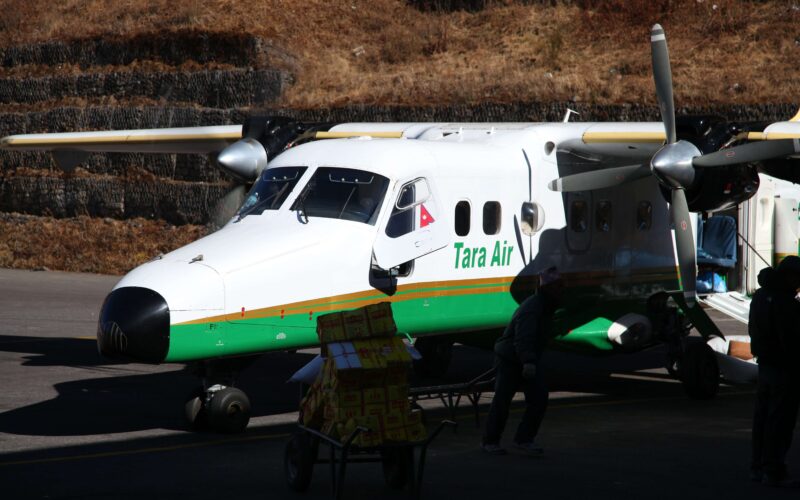The Civil Aviation Authority of Nepal (CAAN) has announced guidelines to enhance flight safety in the country, following the crash of a Tara Air turboprop aircraft on May 29, 2022.
Addressing complex geographical and climatic conditions, the aviation authority said that airlines will have to suspend operations in case of bad weather conditions.
The authority also added that airlines will have to collect weather information and submit it to the ATS [Air Traffic Service – ed. note] Reporting office. The flight plan could only be approved by the office, CAAN added.
The guidelines also included a proposal by the CAAN, which would make it mandatory for no less than two pilots to fly a single-engine aircraft.
On May 29, 2022, the Tara Air De Havilland Canada DHC-6/300 Twin Otter turboprop, registered as 9N-AET and bound for Jomson Airport (JMO), took off from Pokhara Airport (PKR) at 9:53 AM. It lost contact with the airport tower at 10.07AM, Nepal’s aviation authority said in an official statement.
Shortly after the aircraft went missing, two helicopters were deployed to locate the aircraft. The wreckage was located in a remote mountainous area in the Dhaulagiri region, a day after the aircraft disappeared from radars. The aviation authority confirmed that no survivors were found.
Nepal has one of the poorest aviation safety records in the world. Bad weather conditions, steep mountains, lack of training, and old aircraft are often blamed for crashes in the country. The European aviation regulator has banned all Nepali airlines from its airspace since 2013 due to its poor safety records.
Tara Air has had three plane crashes since 2010. In 2016, a Tara Air aircraft crashed in a mountainous area operating a Pokhara-Jomson route, killing 23 people. Prior to the 2016 crash, Tara Air suffered a fatal crash in 2010, killing 22 people including three crew members.

